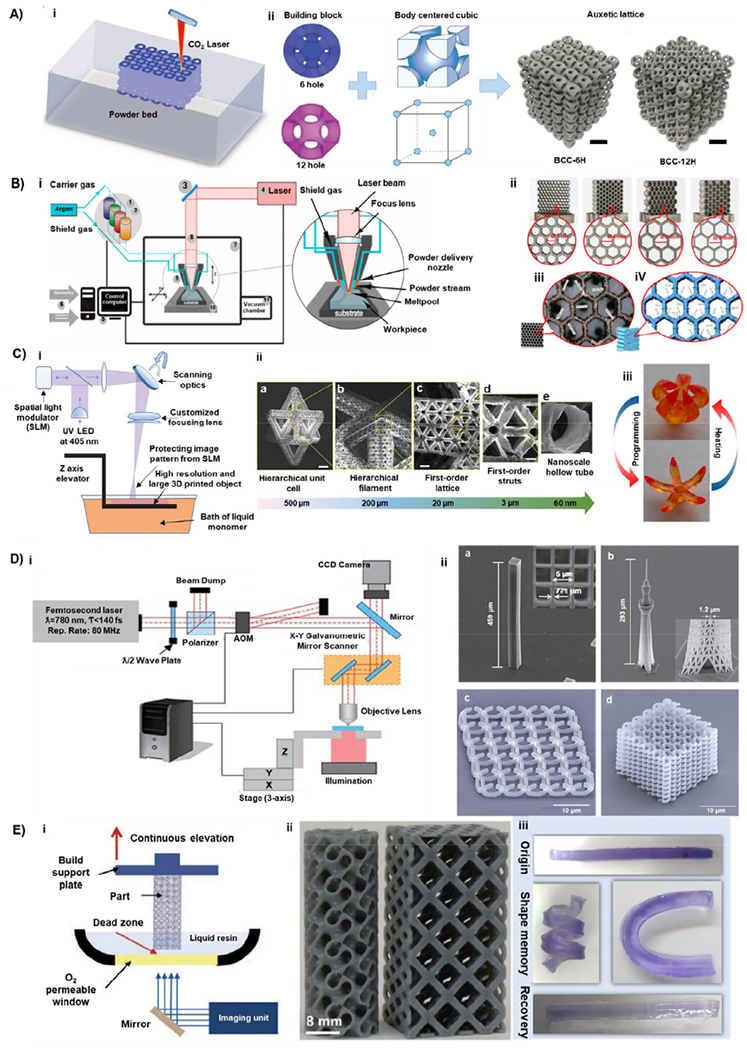Fig. 2.

Light-assisted AM: A) (i) Schematic illustration of a typical building platform for SLS process, (ii) illustration of the concept of structural designs of BCC-6H and BCC-12H metamaterials (Scale bar is 10 mm)[39]; B) (i) Schematic illustration of the LENS system, (ii) four variants of Ti6Al4V thin-walled honeycomb structures with different the unit cell size, (iii) with the application of optical microscopy, and (iv) a 3D model reconstructed from CT data;[32] C) (i) Schematic illustration of large area projection micro-stereolithography, (ii) (a-e) scanning electron micrographs showing cross-section breakdown of structural hierarchy of the multi-scale metamaterial unit cell. (scale bars are 10 and 3 μm in c [13] and (iii) the demonstration of the transition between as printed shape and temporary shape of multi-material shape memory grippers [77]; D) (i) Schematic illustration of TPA, (ii) (a,b) scanning electron micrographs of 6 × 6 grid structure “Tokyo Skytree” fabricated by TPA with 100×high-magnification microscope objective [38] (c,d) a 3D split-ring metamaterial structure, fabricated using a metal-binding hybrid polymer composite. TPA is the only technology that can be used for the fabrication of 3D free-standing structures with submicrometric resolution [40]; E) (i) Schematic demonstration of CLIP method. The oxygen-permeable window creates a dead zone (persistent liquid interface) between the build part and the window, (ii) a gyroid (left) and an argyle (right), printed at a speed of 500 mm/hour [42], (iii) associated shape memory effect [78]. Reprinted and modified by permission of John Wiley and Sons, Multidisciplinary Digital Publishing Institute, Springer Nature, The American Association for the Advancement of Science, and Elsevier.
